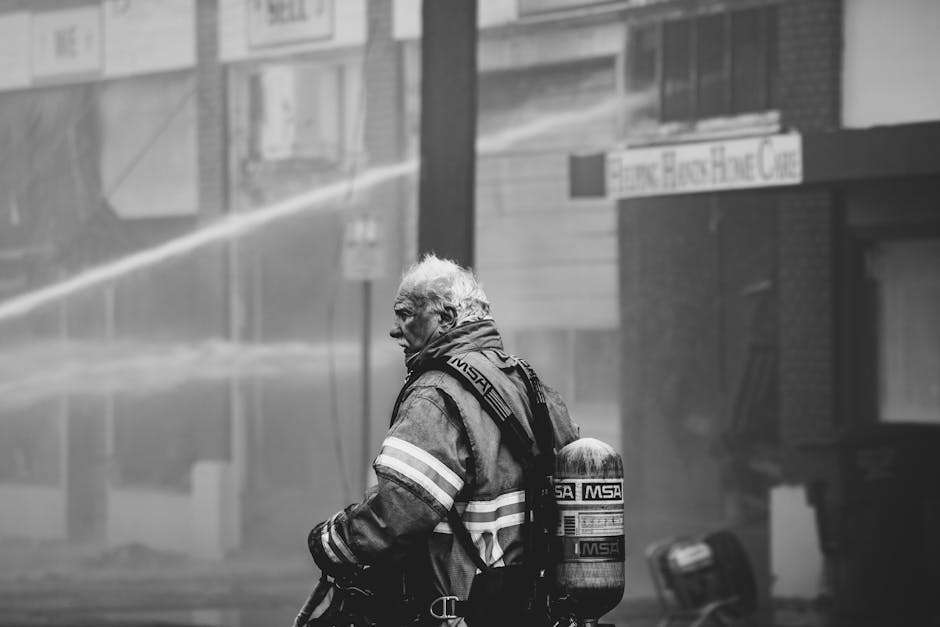Importance of firefighter gloves
Firefighter gloves are a crucial piece of protective gear that shields firefighters’ hands from extreme heat, sharp objects, and hazardous materials during firefighting missions. Without the right gloves, firefighters risk serious injuries that could hinder their ability to perform effectively in emergency situations. Choosing the appropriate firefighter gloves for different firefighting scenarios is essential to ensure optimal safety and dexterity for the firefighters on duty.
Different types of firefighter gloves
Firefighter gloves come in various types to suit different firefighting situations. Here are some common types:
- Structural Firefighting Gloves: Designed for structural firefighting scenarios and provide protection against high heat and flames.
- Extrication Gloves: Ideal for vehicle extrication operations, these gloves offer cut and puncture resistance.
- Wildland Firefighting Gloves: Lightweight and heat-resistant, these gloves are meant for wildfires to provide dexterity and protection.
- Technical Rescue Gloves: Used in technical rescue operations, these gloves offer durability and dexterity for intricate tasks.
Each type of glove is tailored to specific firefighting needs, ensuring firefighters have the appropriate protection for the task at hand.
Factors to consider when choosing firefighter gloves
Consider the type of firefighting situations you will be in when choosing your gloves. Make sure to prioritize protection and durability. Select gloves that have good grip to handle various tools easily. Check for thermal insulation to protect from extreme heat. Look for gloves that are comfortable to wear for long periods.
High-heat firefighting situations and suitable gloves
In high-heat firefighting situations, it’s crucial to have gloves that can withstand extreme temperatures and provide excellent heat resistance. Gloves made from materials such as Kevlar and Nomex are well-suited for these conditions, as they offer exceptional heat protection and durability. Look for gloves with reinforced palm and finger areas to ensure a secure grip on tools and equipment amidst the intense heat. When selecting gloves for high-heat scenarios, prioritize features like heat insulation and flame resistance to keep your hands safe and offer optimal performance during firefighting operations.
Structural firefighting scenarios and glove requirements
Structural firefighting gloves are vital in different fire situations. The gloves for this are specially designed to protect firefighters from high heat and sharp objects. Here are some key points to consider about structural firefighting scenarios and glove requirements:
- High Heat Protection: Structural firefighting gloves must provide high heat protection to shield against intense temperatures.
- Dexterity and Mobility: These gloves should allow for dexterity and mobility to handle various tools and perform tasks efficiently.
- Grip Enhancement: A good grip is essential in firefighting situations to handle equipment securely.
- Durability: The gloves need to be durable to withstand the harsh conditions of firefighting scenarios.
- Proper Fit: Ensuring the gloves fit properly is crucial for comfort and functionality in demanding situations.
Remember, choosing the right structural firefighting gloves is crucial for the safety and effectiveness of firefighters in the field.
Wildland firefighting glove specifications
Wildland firefighting gloves need to meet specific requirements to protect firefighters in rugged outdoor environments. Here are the key specifications to consider when selecting gloves for wildland firefighting:
- Material: Gloves should be made from heat-resistant materials like leather or Kevlar to withstand high temperatures and protect against burns.
- Fit: Gloves should fit snugly to ensure dexterity and grip, allowing firefighters to handle tools and equipment effectively.
- Cuff Length: Longer cuffs provide added protection to the wrists from embers and debris, preventing injuries in rugged firefighting conditions.
- Durability: Gloves must be durable to withstand the harsh conditions of wildland firefighting, including rough terrain and prolonged exposure to heat.
- Comfort: While providing protection, gloves should also be comfortable to wear for extended periods, reducing fatigue and discomfort during firefighting operations.
By paying attention to these specifications, firefighters can ensure they have the right gloves to stay safe and effective in wildland firefighting situations.
Hazmat incidents and glove selection
When dealing with hazardous materials, it’s crucial to select the right gloves to protect yourself. Here are some key points to consider when choosing gloves for hazmat incidents:
- Chemical Resistance: Gloves should be resistant to the specific chemicals involved in the incident.
- Material: Opt for gloves made from materials like nitrile, neoprene, or butyl rubber for hazmat situations.
- Thickness: Thicker gloves provide more protection against hazardous substances.
- Grip: Ensure the gloves offer a secure grip to handle potentially slippery substances.
- Compatibility: Gloves should be compatible with other personal protective equipment (PPE) worn during hazmat incidents.
By considering these factors, you can select the most suitable firefighter gloves for hazmat incidents to stay safe and effectively handle the situation.
Specialty gloves for technical rescue operations
Technical rescue operations require specialty gloves designed to handle specific challenges. These gloves are engineered with features such as enhanced grip, cut resistance, and dexterity to help firefighters effectively respond to complex situations. Specialty gloves are crucial for tasks like rope rescues, confined space operations, and vehicle extrications, where precision and protection are paramount.
Maintaining and caring for firefighter gloves
Make sure to regularly clean your firefighter gloves to remove dirt, debris, and contaminants that can compromise their safety features. Inspect your gloves after each use for any signs of damage, such as tears or abrasions. If you notice any damage, replace the gloves immediately to ensure your safety in future situations.
Store your gloves in a cool, dry place away from direct sunlight and sharp objects. Avoid exposing them to extreme temperatures or chemicals that could degrade the materials. Proper storage helps prolong the lifespan of your gloves and maintain their protective qualities.
Remember to follow the manufacturer’s guidelines for care and maintenance to keep your firefighter gloves in top condition. Regular maintenance and proper care are essential to ensure the effectiveness and safety of your gloves during firefighting operations.
Conclusion: Finding the best firefighter gloves for your needs
As you wrap up your search for firefighter gloves, keep in mind that the best choice depends on the specific situation you face. Structural firefighting demands gloves with excellent heat resistance and dexterity for search and rescue missions. Wildland firefighting requires gloves that offer protection against heat and abrasions while maintaining flexibility. Extrication gloves should prioritize cut and puncture resistance for dealing with sharp objects during rescue operations. Remember, comfort, fit, and durability are essential factors to consider to ensure your gloves can withstand the demands of the job.


